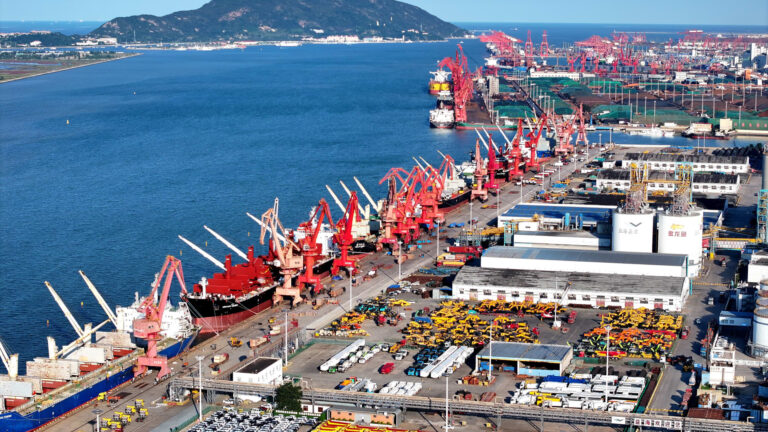Machinery and vehicles ready for shipment at the dock of the Oriental Port Branch of Lianyungang Port in China, on Sept. 27, 2024.
Costfoto | Nurphoto | Getty Images
BEIJING — U.S. has raised tariffs on Chinese imports to triple digits. For China’s exporters, it means raising prices for Americans while accelerating plans to diversify operations — and, in some cases, stopping shipments entirely.
U.S. consumers could lose access to certain products in June since some American companies have halted their plans to import textiles from China, said Ryan Zhao, director at Jiangsu Green Willow Textile.
For products that continue to be shipped from China, “it’s impossible to predict” by how much their prices will rise for U.S. consumers, he said Thursday in Chinese, translated by CNBC. “It takes two to four months for products to be shipped from China’s ports and arrive on U.S. supermarket shelves. In the last two months tariffs have climbed from 10% to 125% today.”
The White House has confirmed the U.S. tariff rate on Chinese goods was effectively at 145%. Triple-digit tariffs essentially cut off most trade, a Tax Foundation economist told CNBC’s “The Exchange.”
But U.S.-China trade relationship won’t change overnight, even as American companies that source from China are looking for alternatives.

Tony Post, CEO of U.S.-based running shoe company Topo Athletic, said he is planning to work more with suppliers based in Vietnam in addition to his existing China suppliers.
When the initial two rounds of 10% U.S. tariffs were imposed this year, he said his four China suppliers offered to split the cost with Topo. But now “more than the cost of the product itself has been added in import duties just in the last few months,” he said.
“I’m going to eventually have to raise prices and I don’t know for sure what impact that is going to have on our business,” Post said. Before Trump started with tariffs, Post predicted nearly $100 million in revenue this year — primarily from the U.S.
Economic fallout
Hopes for a U.S.-China deal to resolve trade tensions have faded fast as Beijing has hit back in the last week with tit-for-tat duties on American goods and wide-ranging restrictions on U.S. businesses.
With steep tariffs, China’s shipments to the U.S. will likely plunge by 80% over the next two years, Julian Evans-Pritchard, head of China economics at Capital Economics, said late Thursday.
Goldman Sachs on Thursday cut its China GDP forecast to 4% given the drag from U.S. trade tensions and slower global growth.
While Chinese exports to the U.S. only account for about 3 percentage points of China’s total GDP, there’s still a significant impact on employment, Goldman Sachs analysts said. They estimate around 10 million to 20 million workers in China are involved with U.S.-bound export businesses.
As Beijing tries to address already slowing growth, one of its strategies is to help Chinese exporters sell more at home. China’s Ministry of Commerce said Thursday it recently…
Read More: How China’s exporters are scrambling to mitigate the impact of punishing



